As with any physical activity, the more you ride your bike the more you get to learn about your body and how it reacts in certain situations. That’s doubly true when we’re talking about riding at any kind of intensity, whether you’re trying to set a new Strava KOM/QOM/PR, trying to hold your mate’s wheel in the hills or trying to get home from your morning ride before that nasty-looking storm rolls through.
Push yourself often enough on the bike and you’ll start to get an idea of where your limits are. Or at least where you think your limits are.
I’ve only done a handful of races in my time but one thing I learned in my very first race was that I actually had no idea where my limits where when it came to riding hard. Sure, I’d pushed myself in training or when trying to set a new personal best on a favourite climb, but I’d never gone so hard that my vision started to go blurry and I simply had nothing left in my legs.
If you’ve got a competitive streak, racing will take you to that place of suffering (aka the “paincave” or “hurtbox”) pretty quickly. When you’re singularly focused on holding the wheel in front, or sprinting to the line for a victory, you learn a lot about yourself and how far it’s possible to push before you crack.
And this is one of the many, many things that sets the riders in the professional peloton apart from amateur riders: they know how to suffer. Jens Voigt’s now-cliched saying “Shut up legs!” (see video above) is an obvious manifestation of that — he knew that while his legs may have been screaming at him, he worked out a way to push through the pain and continue.
It’s why in races like the Tour de France or the Giro d’Italia you often see the super domestiques blow up spectacularly once they’ve finished doing their turn of pace on the front. They’ve done all they can; it’s about survival from that point on.
As anyone with a competitive streak knows, there’s a kind of perverse appeal in this idea of suffering. Brands like Rapha have made a name for themselves by harnessing the idea of “glory through suffering”. Think long, hard rides in the driving rain, or using a tough ride as a metaphor or one’s battle with cancer.
And of course, The Sufferfest is a prime example of a brand using the appeal of suffering as a marketing tool, and doing so very effectively.
So what is it that makes us want to suffer on the bike? For me it’s about the pleasure of finding your limits, or pushing yourself to a place that you didn’t think was possible. It’s about overcoming difficulty and, more than likely, that amazing feeling of relief and satisfaction you get when the effort is over and you can relax.
So how do you learn to suffer on the bike? Well, just like the best way to improve your climbing is to do lots of climbing, if you want to get better at hurting on the bike, you’ll need to start pushing yourself.
Head out to your favourite climb and set yourself a challenge. Maybe you’ve got a goal time in mind, or maybe you just want to see how fast you can do it. Or maybe it’s not even the full climb — maybe you want to do a five-minute effort, or a 20-minute effort, or a one-hour effort.
It really depends on what you’re trying to achieve. As with anything, if you’ve got a goal in mind the motivation will come much easier. Aiming to do well in that race later in the year that has a bunch of 3km climbs? Get out there and bury yourself on 3km climbs. Aiming for a sub-18-minute time on the 1 in 20? Go and push yourself for 18 minutes.
When you’re riding hard, pay attention to how it feels. It’s going to be hurting, obviously, but what hurts? Is it your lungs, gasping for air? Is it your legs unable to provide any more power? Or is it just a general feeling of discomfort? If it’s just discomfort, can you push through?
I hope it’s obvious that if you’ve got any sort of relevant medical condition, you should think twice before pushing yourself too hard. And even if you’re totally fit and healthy, please listen to your body and be sensible with how hard you push yourself.
The inspiration for this post came about a couple weeks ago at the Melbourne launch of Zwift. For those of you that haven’t heard of Zwift, it’s an online game that you can hook up to your stationary trainer to allow you to race against others around the world, all from the comfort of your home. You can find out more about Zwift at the company’s website.
The organisers of the Zwift event in Melbourne put on a contest to see who could complete the “Watopia” course in the fastest time. Local rider and Zwift aficionado Shane Miller said before his attempt that he wanted to beat the course KOM and set a new best time of 12:30. He succeeded in setting a new KOM, winning the contest and getting within one second of his goal time.
As you can see in the video below, which I shot on the night, Shane gave it absolutely everything he had. It was a valuable, up-close lesson of what it means to push yourself to the limit, to get the absolute best out of yourself on the bike.
It’s been a while since I went out to the hills and really challenged myself, to see how fast I could do a certain climb. But watching Shane Miller’s effort the other week provided great inspiration.
There’s tremendous satisfaction to be had in setting a new personal best, doing well in a race you were targeting, or even just being able to stay with your mates on that ride through the hills. And to do all of those, you need to learn to suffer.

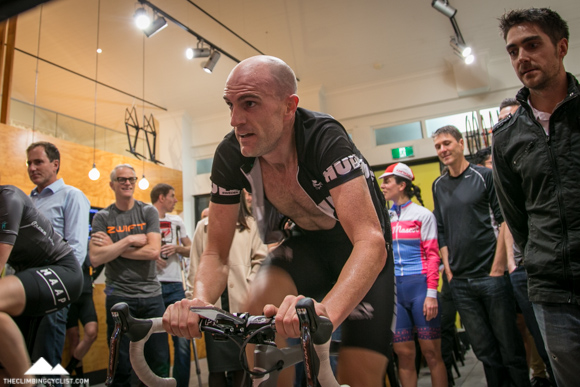
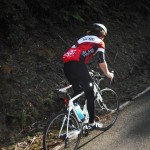
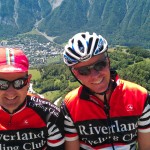
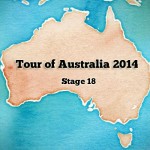

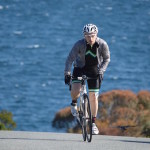
In all my 3 attempts on Peaks Challenge – Falls Creek I have successfully managed to find a new all-time physical and mental “lows” in terms of suffering each time – culminating in my first sub-10 hr ride this year. Each time and each ride the suffering is different but you always have that “low” as a reference to come back to when things start getting tough. For me, I have learnt it all comes down to how badly you want and truly desire it in terms of overcoming – how many times can you keep getting up and push on on when your body says “…please no more of this f#%king madness !!!”
Thanks for your insight Ben! You-re right – 3 Peaks has a way of teaching you to suffer. 😉 And that’s a great point about having a reference “low”. It always makes it that little bit easier next time around!
the suffering you endure on a ride like Peaks is different to that in a race. one is more intense and is about how much pain you can tolerate over a short period of time (seconds, minutes), while the other is just pushing through that feeling of fatigue and soreness you get on a long ride. I actually find the latter harder – particularly when you get hunger knock and you just lose the will to continue, it takes a lot of strength to push on. but it’s different to the intense suffering you get in racing, which is when you have the energy to go harder, but need to switch off the pain signal that is telling you not to go harder..
Agreed – also when racing you are often being motivated and reacting to other riders that are competing against you – I find in these situations the adrenaline also helps overcome the pain in making the selection, but when riding long solos it so much more in your own head and when without anyone to keep you company, it’s often the time when the “demons” of self doubt can creep in and conspire against you when things get tough – again the suffering and how we overcome is different for every ride, I guess it’s part of the beauty of cycling and why we keep coming back for more…
there’s no doubt that you can train yourself to suffer. in fact I’m amazed at how you can learn to ‘compartmentalise’ suffering in a way that can you leave you feeling kind of Zen. my favorite case of suffering was Stephen Roche saving his 1987 Tour by putting himself into oxygen deficit and being taken away after the stage in an ambulance. he was not going to be beaten – full stop.
I like the idea of Zwift and I’m sure it will be a great success, but right now I’m totally hooked on TrainerRoad. Each time I do a particular TrainerRoad workout, it places exactly the same demands on me, so if a particular workout feels easier, I know I’m getting fitter.
Shane Miller has got a very big engine. He passed me like I was standing still at the recent informal Warrandyte Time Trial.